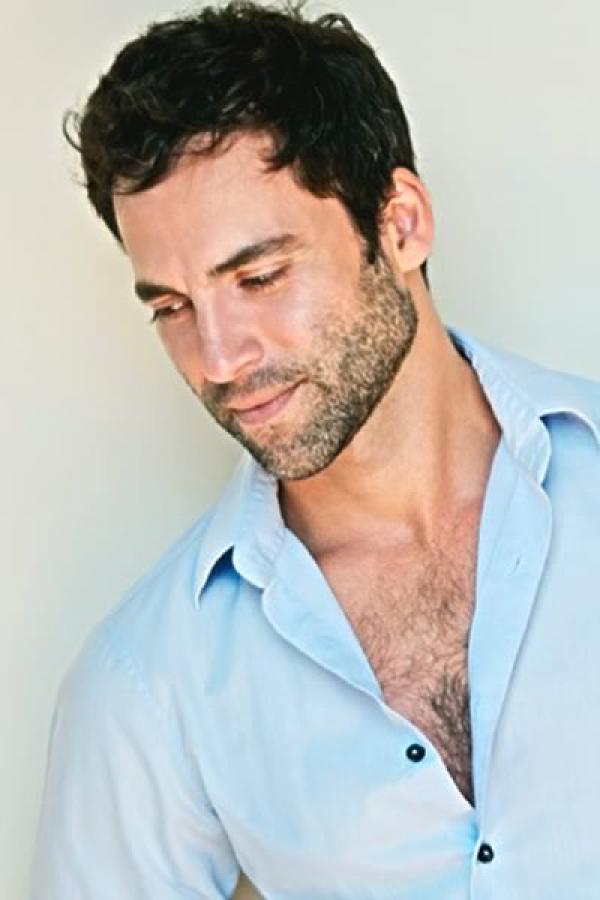Mario Alberto Zambrano

Photo by Nephi Nevin
Bio
Mario Alberto Zambrano was a contemporary ballet dancer before writing fiction. He has lived in Israel, The Netherlands, Germany, Spain, and Japan, and has danced for Hubbard Street Dance Chicago, Nederlands Dans Theater, Ballet Frankfurt, and Batsheva Dance Company. He graduated from The New School as a Riggio Honors Fellow and the Iowa Writers’ Workshop as an Iowa Arts Fellow, where he also received a John C. Schupes Fellowship for Excellence in Fiction. Loteria, his first novel, was a Barnes and Noble Discover Great New Writer pick for Fall 2013, a finalist for the 2014 Writers’ League of Texas Book Award, and the 2014 John Gardner Fiction Award. Loteria was hailed as a best book of 2013 by Booklist, The Village Voice, School Library Journal, and San Antonio Press. His writing has appeared in FiveChapters, Guernica, and Brooklyn Rail, and has been anthologized in Best Gay Stories 2014 and Narrative 4’s How To Be A Man project. He has been awarded fellowships from MacDowell Colony, Yaddo, and the National Endowment for the Arts.
Author's Statement
I can't express enough how grateful how I am for the support from the NEA. I've been working on my second novel, which is bigger in scope than my first, and have on occasion tried to rush the process in order to get a finished manuscript to my agent. But when I catch myself rushing through the process, I hear Charles Baxter in the back of my mind saying, "Literature is not a race."
Some would like to imagine that the creative process is a way in which you follow a pragmatic set of rules to produce a body of work, but unlike the study of science (which also has its proportions of research and wondrous mystery behind it) the creative process is one of uncertainty; so naturally, the economic establishment cringes at the idea of placing investment in someone or something that has no clear end. But as an artist, what offends this assumption is that the degree of rigor and scholarship with which artists dedicate themselves is somehow overlooked; their work isn't considered an asset nor a necessity in cultural evolving. However, and fortunately, there are residencies, foundations, and agencies that recognize not only the work we produce but also the indomitable will we have to create them. Grants offered by the NEA are not only a form of validation for artists, but they give us an opportunity to continue working, which might at first glance seem inherently personal but is as much personal as it is communal, in that making art—a musical composition, a book of poetry, a novel—we are writing stories into the history of human expression. And I am deeply grateful for that.
from "The Composition of Geromie Parc"
It was by the window when I remember her face turning silver. She’d raise her eyes to the moon and expose the dimple under her chin. The shape of her nose divided the spoon of her cheeks and all of her glowed silver as she looked out the window. She’d tell me about the time she was a dancer in the Paris Opéra, about her favorite ballet Giselle. Never Swan Lake. Never Romeo and Juliet. But Giselle, the story about a peasant girl who dies from a broken heart.
“Do you know what time it is?” she’d ask.
She’d take a step and drag an arabesque along the floor before stopping at my knees with her foot turned out, showing me the vein that ran up her ankle. She hardly played games with me but on these occasions when she let the music transform her in this way, holding her arms like the necks of two swans, I knew she felt like dancing.
I’d raise my head and stand up for her.
“Do you remember what I told you about the Wilis?” she asked. The Wilis were the broken-hearted ghosts in Act II of Giselle who found their revenge in making men dance to their death. I knew from the times we’d played before it didn’t matter that I didn’t know how to dance. The point was to get up and move my body.
“Any boy,” she said. “Any man we find we’ll make dance until he turns blue in the face!”
I see her and am touched by the thought of how much she loved me, how in the solitude of our home it might’ve been a practice of mine to have tried to keep her happy by giving her what she wanted, to have given her the illusion that she was dancing the ballet she remembered.
And so I danced for her, that’s how I began: if Haydn was playing I’d shake my hips and throw my arms over my head, climb on the couch and run in circles; if a cello played, I’d sway my head side to side as though I were a blind man conducting music, feeling the music and almost mimicking the emotions that came to me. Sometimes she would dance with me, circling around me and holding my hands; other times I’d get so consumed I’d forget she was in the room. What was natural to me was obvious, I suppose, so I never considered it as anything more than an immediate sensation, something that had already been borne in me so that it was nothing I had to look for. Dancing was as simple to me as saying my name. But even so, it was during these evenings when Maman taught me how to lose myself to music.
“Don’t think,” she’d say. “Let your body listen, Geromie. You have to believe your body has a mind of its own. It wants to have its own say with the music.”

